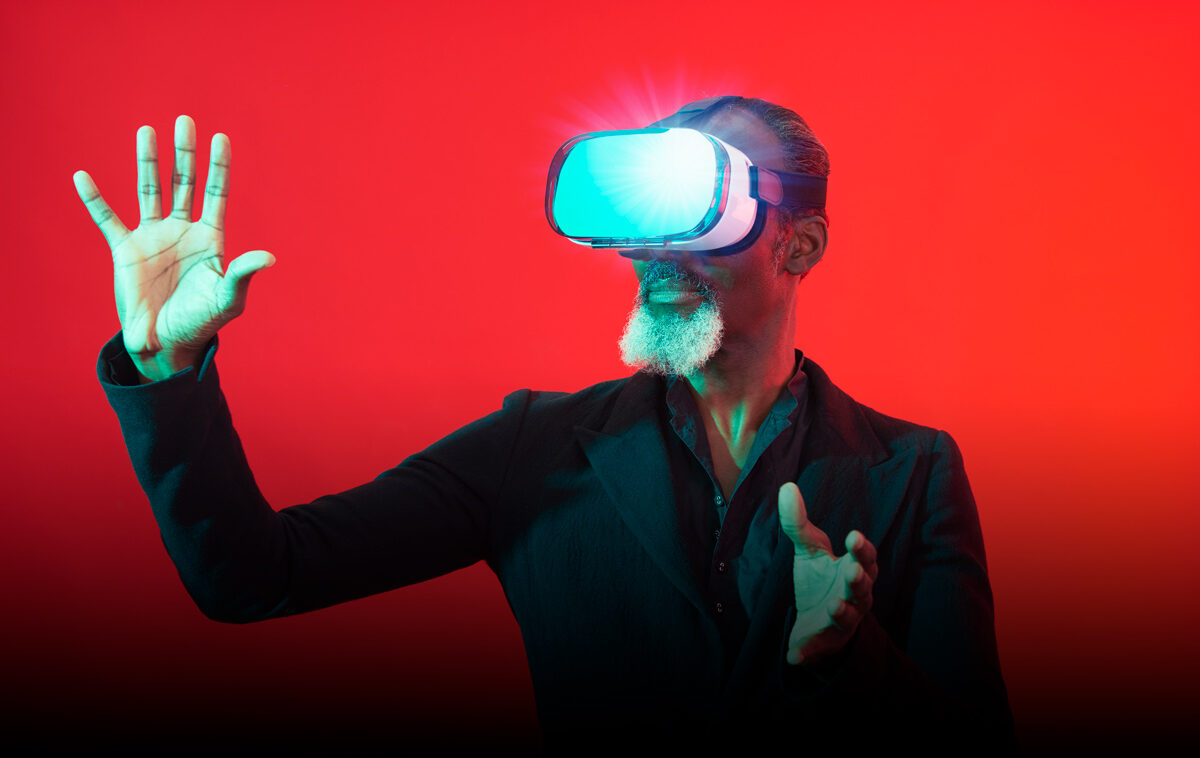Driving Immersive Experiences in Virtual and Augmented Reality
Ask anyone about what modern technology could have the most exciting impact on their lives and many are likely to say virtual reality (VR) or augmented reality (AR). It’s not hard to understand why. Even the names conjure up visions of an exotic picture where the immediate environment around us, as well as the entire world beyond us, could be created or transformed in magical ways. Toss in the many advanced VR and AR products that have already been introduced to the market, as well as all the creative implementations of the technology in gaming, shopping, entertainment, and medical procedures, and you can easily see how consumers and businesses alike could get caught up in the potential of this new technology.
[TWEET “The reality of #AR and #VR is at our fingertips, if #storage can keep up.”]
Driving Immersive Experiences
From a tech perspective, most of the focus around AR and VR has been on the visual experience, and rightly so. After all, with virtual reality products, an entirely new digital world is created that completely encompasses your field of view. Whether playing a game, watching a 360˚ movie, walking through a 3D model of a building, travelling through the universe, or any number of other immersive experiences, VR headsets and related products are designed to create the illusion that you’re in an utterly new world.
On the augmented reality side, the idea is to overlay digital information and other content onto a real-world camera view. Popular mobile gaming apps were the first experience that many people had with AR, but the technology continues to evolve and improve and products that overlay space battles and first-person combat hint at the shape of things to come.
Higher Resolution for VR/AR Digital Display
As critical as the visual components and technologies that enable VR and AR may be, however, there’s an equally critical role for storage and computing to make these experiences possible. For starters, to create realistic 3D visual experiences with VR and AR you need to produce a pair of extremely high-resolution image streams (one for each eye) at a very rapid rate. Because the displays for many VR and AR products are so close to our eyes, people are much more sensitive to things like the “screen door” effect, where you can see individual pixels. People are also more cognizant of image quality and any potential glitches in the video or 3D-rendered display stream used in various VR and AR applications. As a result, for both dedicated devices and even those that use a smartphone, there are demands for optimal display resolutions and capabilities that go far beyond what’s necessary when viewing a smartphone at a normal distance.
Faster Speeds for Real Time VR/AR Experiences
In order to produce these types of complex images, and the millions of pixels that make them up, at the necessary frame rates, you need extremely powerful computing elements and a very fast and reliable storage architecture. Many VR and AR applications use sophisticated 3D models, stream 4K-quality video and make very dynamic changes to the displays in real time, all at levels of detail and complexity that have never been required before by mainstream applications. That’s a big part of what makes VR and AR so exciting, and so challenging, from a technical perspective. These visual processing demands require things like fast graphic processors (GPUs), in addition to fast regular processors (CPUs), and fast memory and storage components that can keep up with the taxing compute requirements for VR and AR. A key part of this is flash storage, which is the only kind of storage architecture that can offer the speed and physical size necessary for these devices.
Compute and Storage to Power Reality Experiences
In fact, with VR and AR the technical requirements go well beyond just being a nice feature to have. Because of the immersive nature of these experiences, if you don’t have enough computing and storage horsepower to drive a high-quality experience, people can actually start to feel ill when using these products. As you’ve undoubtedly seen (or even experienced), many early VR and AR products made some people feel queasy after using them. The reason? The technology in those products simply wasn’t fast enough to meet the extremely high requirements that a good VR or AR experience demands—especially when you incorporate the need to react to how you move around in real time. Thankfully, as the technology has improved—across display resolutions, computing architectures and storage speed—these issues have started to go away, but they dramatically highlight how important the right technology can be in delivering a high-quality experience (or not!).
Lightweight, Embedded Data Storage to Fit in VR/AR-Capable Products
One of the other challenges unique to VR and AR products is the need to make them lightweight. Because VR experiences require wearing a headset, goggles or electronics-equipped glasses on your face for extended periods of time, it’s absolutely essential to make these head-mounted displays as light as possible. The electronics components that have to fit inside these headset-type displays, in particular, need to be feather-light to help compensate for the padding and other physical materials required to make the headsets more comfortable to wear. Again, storage components like the latest generation 3D NAND flash can squeeze impressive amounts of data storage into a tiny space.
In the case of AR, many of the near-term applications are going to be developed for smartphones. That means vendors creating designs for both mid-range and higher end smartphones (and, eventually, all smartphones), need to include the computing, graphics, memory and storage architectures necessary to enable high-quality AR experiences. In other words, fast and powerful. Consumers are going to be looking to purchase smartphones that can deliver immersive, compelling augmented reality experiences, so product designers need to plan accordingly.
Though current VR and AR products are very exciting and can deliver some very impressive experience, most industry observers would agree that we’re still in the very early days for these technologies and the impact from their new use cases. Looking forward, we can expect to see even higher-resolution displays, faster response time, and significantly stronger computing horsepower in even smaller, lighter weight head-worn products. Key to making this future vision a reality will be ongoing advances in miniaturization, technology integration, and clever engineering design. When we get to the kinds of products we can currently only imagine, we’ll feel the true impact of both VR and AR.
Western Digital will be showing its Embedded Solutions as well as an innovative AR demo at next week’s Mobile World Congress Barcelona and Embedded World Nuremberg from February 26 to March 1.
Bob O’Donnell is the president and chief analyst of TECHnalysis Research, LLC a market research firm that provides strategic consulting and market research services to the technology industry and professional financial community. You can follow him on Twitter @bobodtech.
Forward-Looking Statements
Certain blog and other posts on this website may contain forward-looking statements, including statements relating to expectations for the market for our products, product technologies, and the capacities, capailities and applications of our products. These forward-looking statements are subject to risks and uncertainties that could cause actual results to differ materially from those expressed in the forward-looking statements, including development and adoption challenges or delays, supply chain and logistics issues, changes in markets, demand, global economic conditions and other risks and uncertainties listed in Western Digital Corporation’s most recent quarterly and annual reports filed with the Securities and Exchange Commission, to which your attention is directed. Readers are cautioned not to place undue reliance on these forward-looking statements and we undertake no obligation to update these forward-looking statements to reflect subsequent events or circumstances.




